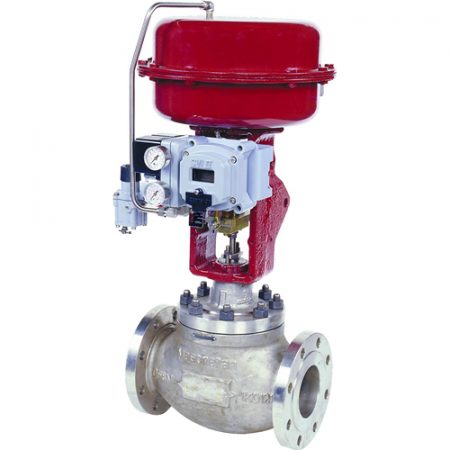Checking out the Performance of Modern Control Valves in Industrial Applications
Checking out the Performance of Modern Control Valves in Industrial Applications
Blog Article

Maximize Power Financial Savings and Convenience With Advanced Building Automation Controls
In the world of contemporary design and center management, the combination of innovative structure automation regulates stands as a pivotal innovation. By using the power of automation, structures can adjust, react, and develop in methods that were as soon as inconceivable.
Energy Effectiveness Conveniences
Power performance benefits can dramatically reduce energy consumption and functional prices in structures. Energy-efficient systems, such as sophisticated building automation controls, can enhance the use of resources like heating, lighting, and air conditioning, leading to reduced energy expenses over time.
Moreover, boosted power efficiency can prolong the life-span of building equipment and systems. By running a lot more effectively, cooling and heating systems, lighting fixture, and other building parts experience less wear and tear, causing lowered upkeep and replacement costs. Furthermore, energy-efficient buildings often regulate greater residential property worths and rental rates, providing lasting financial advantages to owners.
Moreover, energy performance can improve occupant convenience and productivity. Effectively controlled interior atmospheres with optimal lights and thermal conditions develop a more positive and conducive workspace, causing improved worker contentment and efficiency. In general, the power effectiveness advantages connected with advanced building automation controls are multifaceted, encompassing expense savings, ecological stewardship, and owner health.
Boosted Comfort Control
Enhancing comfort control in structure environments requires a sophisticated integration of advanced automation systems for optimum occupant wellness. By using sophisticated structure automation controls, centers can customize the interior setting to meet the details needs and preferences of passengers. These systems allow precise law of illumination, air flow, and temperature, developing a productive and comfortable environment. Resident complete satisfaction and productivity are very closely connected to thermal convenience, making it important to have systems in place that can adjust to transforming problems in real-time.
Improved convenience control exceeds fundamental temperature level adjustments. It includes features such as personalized setups, occupancy sensing units, and natural light application to create a dynamic and receptive atmosphere. By including these innovative controls, structures can not just enhance comfort however also boost energy efficiency by optimizing system procedures based on real tenancy and use patterns. Ultimately, focusing on passenger comfort through sophisticated automation systems causes an extra enjoyable and much healthier indoor environment.
Operational Performance Improvements

In addition, the implementation of real-time tracking and analytics tools allows structure drivers to determine power inadequacies and functional abnormalities promptly. By continually keeping track of energy use patterns and system performance metrics, modifications can be made in real-time to maximize power intake and guarantee peak operational efficiency. control valves. In addition, integrating demand response methods into building automation controls can additionally boost functional effectiveness by dynamically readjusting energy usage based upon grid problems have a peek at this website and pricing signals
Indoor Environment Optimization
Efficient interior climate optimization is an essential aspect of structure automation controls, guaranteeing residents' convenience and health while maximizing power cost savings. By using advanced sensors and controls, building automation systems can constantly adjust and keep an eye on temperature, moisture degrees, air top quality, and ventilation to develop an optimal indoor setting. Preserving constant and comfy problems not only improves passenger contentment however likewise improves productivity and total well-being.
Interior environment optimization also plays a critical duty in power efficiency. By fine-tuning ventilation, air conditioning, and home heating systems based upon real-time data and tenancy patterns, developing automation controls can significantly reduce energy consumption - control valves. Executing strategies such as demand-controlled ventilation and thermal zoning can aid reduce energy waste while making sure that each area of the structure obtains the needed conditioning.

Sustainable Setting Creation
Building automation controls not just optimize interior climate problems for power performance and passenger comfort however also lay the structure for developing a lasting setting via critical monitoring of sources and systems. By incorporating innovative building automation modern technologies, such as sensing units, actuators, and intelligent software application, centers can adjust and check energy usage in real-time to minimize waste and reduce their carbon impact. These systems make it possible for predictive upkeep, determining potential concerns before they intensify and maximizing equipment performance to improve long life and effectiveness.
Additionally, sustainable atmosphere development prolongs beyond energy monitoring to incorporate water conservation, waste reduction, and interior air high quality renovation. Building automation controls can control water usage, discover leaks, and make sure correct waste disposal methods, adding to total sustainability efforts. In addition, navigate to this website by monitoring and managing air flow and purification systems, these technologies improve resident health and efficiency while decreasing energy usage related to cooling and heating operations.
Conclusion
Finally, progressed structure automation regulates deal substantial advantages in regards to energy savings, comfort control, operational efficiency, indoor environment optimization, and developing a sustainable atmosphere. By applying these controls, buildings can achieve ideal performance while minimizing energy usage and improving occupant convenience. It is apparent that using innovative automation modern technology is essential in improving building performance and creating an extra sustainable future.
Power efficiency advantages can significantly minimize power intake and operational costs in buildings. In general, the power efficiency benefits connected with innovative building automation controls are multifaceted, incorporating cost financial savings, ecological stewardship, and owner well-being.
Furthermore, integrating need action techniques into building automation controls can better boost functional performance by dynamically readjusting power usage based on click for more grid problems and prices signals.
Structure automation regulates not only enhance interior climate conditions for power effectiveness and occupant convenience yet also lay the structure for creating a lasting setting via calculated administration of systems and sources.In conclusion, advanced structure automation manages offer considerable advantages in terms of energy savings, convenience control, operational efficiency, interior climate optimization, and creating a sustainable setting.
Report this page